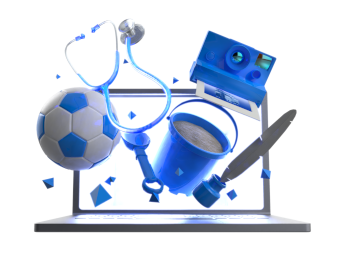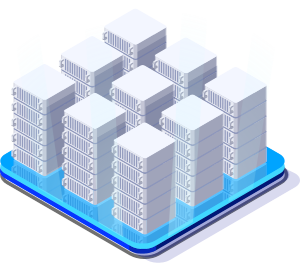b1b2b3b4b5b6b7b8b9b10b11b12b13b14b15b16b17b18b19b20b21b22b23b24b25b26b27b28b29b30b31b32b33b34b35b36b37b38b39b40b41b42b43b44b45b46b47b48b49b50
l1l2l3l4l5l6l7l8l9l10l11l12l13l14l15l16l17l18l19l20l21l22l23l24l25l26l27l28l29l30l31l32l33l34l35l36l37l38l39l40l41l42l43l44l45l46l47l48l49l50l51l52l53l54l55l56l57l58l59l60
o1o2o3o4o5o6o7o8o9o10o11o12o13o14o15o16o17o18o19o20o21o22o23o24o25o26o27o28o29o30o31o32o33o34o35o36o37o38o39o40o41o42o43o44o45o46o47o48o49o50o51o52o53o54o55o56o57o58o59o60o61o62o63
g1g2g3g4g5g6g7g8g9g10g11g12g13g14g15g16g17g18g19g20g21g22g23g24g25g26g27g28g29g30g31g32g33g34g35g36g37g38g39g40g41g42g43g44g45g46g47g48g49g50g51g52g53g54g55
u1u2u3u4u5u6u7u8u9u10u11u12u13u14u15u16u17u18u19u20u21u22u23u24u25u26u27u28u29u30u31u32u33u34u35u36u37u38u39u40u41u42u43u44u45u46u47u48u49u50u51u52u53u54u55u56u57u58u59u60u61u62u63u64u65u66u67u68u69
s1s2s3s4s5s6s7s8s9s10s11s12s13s14s15s16s17s18s19s20s21s22s23s24s25s26s27s28s29s30s31s32s33s34s35s36s37s38s39s40s41s42s43s44s45s46s47s48s49s50s51s52s53s54s55s56s57s58s59s60s61s62s63s64s65s66s67
p1p2p3p4p5p6p7p8p9p10p11p12p13p14p15p16p17p18p19p20p21p22p23p24p25p26p27p28p29p30p31p32p33p34p35p36p37p38p39p40p41p42p43p44p45p46p47p48p49p50p51p52p53p54p55p56p57p58p59p60p61p62p63p64
o1o2o3o4o5o6o7o8o9o10o11o12o13o14o15o16o17o18o19o20o21o22o23o24o25o26o27o28o29o30o31o32o33o34o35o36o37o38o39o40o41o42o43o44o45o46o47o48o49o50o51o52o53o54o55o56o57o58o59o60o61o62o63
s1s2s3s4s5s6s7s8s9s10s11s12s13s14s15s16s17s18s19s20s21s22s23s24s25s26s27s28s29s30s31s32s33s34s35s36s37s38s39s40s41s42s43s44s45s46s47s48s49s50s51s52s53s54s55s56s57s58s59s60s61s62s63s64s65s66s67
p1p2p3p4p5p6p7p8p9p10p11p12p13p14p15p16p17p18p19p20p21p22p23p24p25p26p27p28p29p30p31p32p33p34p35p36p37p38p39p40p41p42p43p44p45p46p47p48p49p50p51p52p53p54p55p56p57p58p59p60p61p62p63p64
o1o2o3o4o5o6o7o8o9o10o11o12o13o14o15o16o17o18o19o20o21o22o23o24o25o26o27o28o29o30o31o32o33o34o35o36o37o38o39o40o41o42o43o44o45o46o47o48o49o50o51o52o53o54o55o56o57o58o59o60o61o62o63
l1l2l3l4l5l6l7l8l9l10l11l12l13l14l15l16l17l18l19l20l21l22l23l24l25l26l27l28l29l30l31l32l33l34l35l36l37l38l39l40l41l42l43l44l45l46l47l48l49l50l51l52l53l54l55l56l57l58l59l60
i1i2i3i4i5i6i7i8i9i10i11i12i13i14i15i16i17i18i19i20i21i22i23i24i25i26i27i28i29i30i31i32i33i34i35i36i37i38i39i40i41i42i43i44i45i46i47i48i49i50i51i52i53i54i55i56i57
t1t2t3t4t5t6t7t8t9t10t11t12t13t14t15t16t17t18t19t20t21t22t23t24t25t26t27t28t29t30t31t32t33t34t35t36t37t38t39t40t41t42t43t44t45t46t47t48t49t50t51t52t53t54t55t56t57t58t59t60t61t62t63t64t65t66t67t68
u1u2u3u4u5u6u7u8u9u10u11u12u13u14u15u16u17u18u19u20u21u22u23u24u25u26u27u28u29u30u31u32u33u34u35u36u37u38u39u40u41u42u43u44u45u46u47u48u49u50u51u52u53u54u55u56u57u58u59u60u61u62u63u64u65u66u67u68u69
s1s2s3s4s5s6s7s8s9s10s11s12s13s14s15s16s17s18s19s20s21s22s23s24s25s26s27s28s29s30s31s32s33s34s35s36s37s38s39s40s41s42s43s44s45s46s47s48s49s50s51s52s53s54s55s56s57s58s59s60s61s62s63s64s65s66s67
p1p2p3p4p5p6p7p8p9p10p11p12p13p14p15p16p17p18p19p20p21p22p23p24p25p26p27p28p29p30p31p32p33p34p35p36p37p38p39p40p41p42p43p44p45p46p47p48p49p50p51p52p53p54p55p56p57p58p59p60p61p62p63p64
l1l2l3l4l5l6l7l8l9l10l11l12l13l14l15l16l17l18l19l20l21l22l23l24l25l26l27l28l29l30l31l32l33l34l35l36l37l38l39l40l41l42l43l44l45l46l47l48l49l50l51l52l53l54l55l56l57l58l59l60





